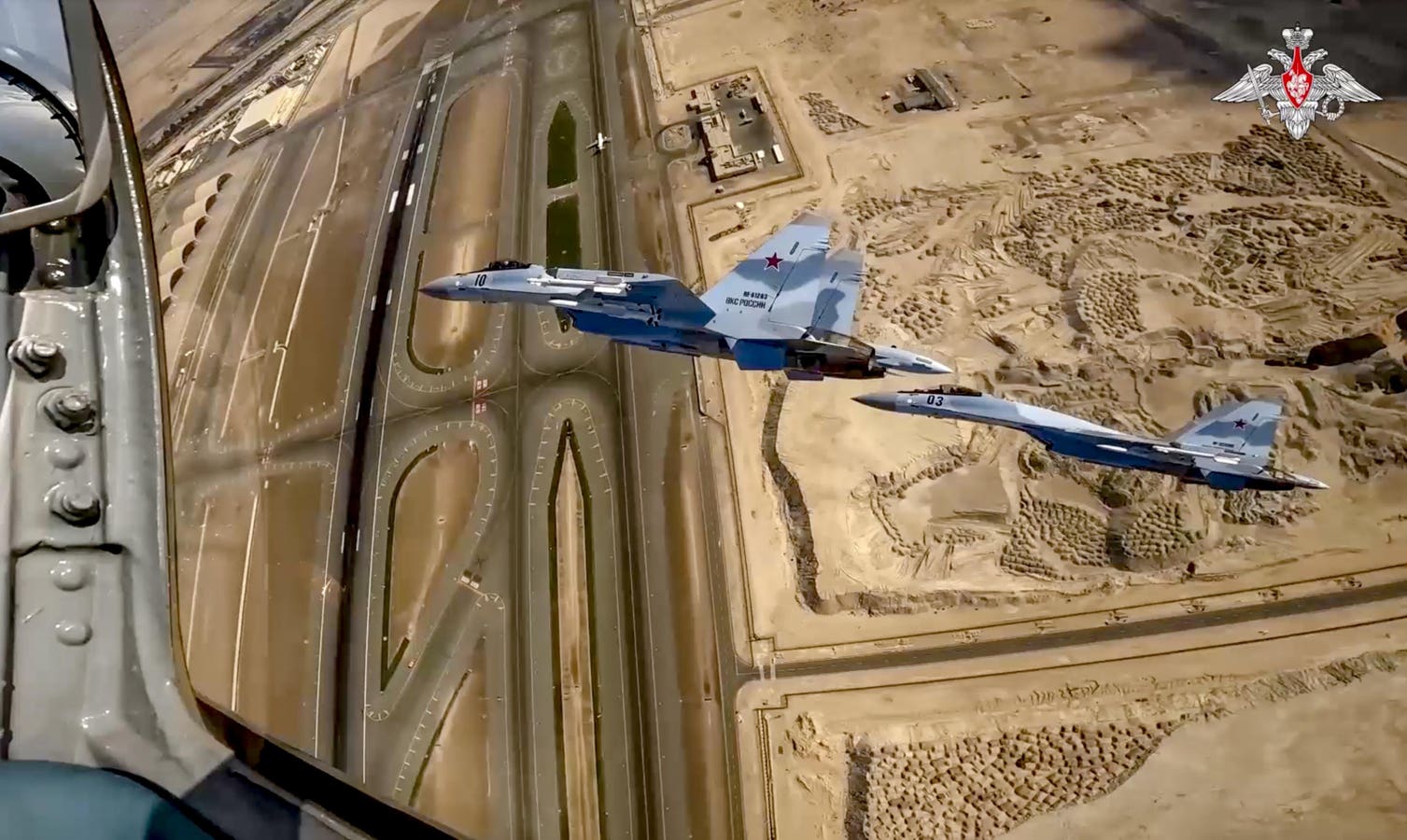UPDATE April 21: Iran has officially denied reports of an imminent delivery of Su-35s to the country next week. Reports circulating in Iranian media yesterday all cited the country’s official Student News Network, SNN, which is affiliated with the Islamic Revolutionary Guard Corps. SNN later deleted the report, declaring it false.
It’s not the first time Iran prematurely expected delivery of the jets. In January 2023, an Iranian official said the jets would arrive the following March, just in time for the Iranian New Year.
Iran might receive its long-awaited Su-35 Flanker fighter jets from Russia as soon as next week, according to several reports appearing in Iran’s state-run media on Saturday. If true, a delivery in this timeframe could prove highly significant since it coincides with the highest tensions between Israel and the Islamic Republic since the latter’s inception.
According to reports in Iranian media on Saturday, the first shipment of Su-35s is due to arrive in Tehran next week. None of these reports specified how many fighters are expected in this shipment. It is widely believed Iran will receive at least 24 fighters in total.
(A report by an Iranian journalist last summer revealed Iran had ordered and paid for 50 Su-35s back in 2021, although it’s unclear if Russia could deliver that many anytime soon considering the severe restraints imposed by its war against Ukraine.)
Interestingly, Saturday’s Iranian media reports quoted a previous report in Kuwait’s Arabic Al-Jarida newspaper last week. That report claimed Iran received a number of Su-35s last year, but Russia did not provide adequate electronic and spare parts, limiting their overall utility for Iran.
Russia, the report added, delayed delivering these parts under pressure from Israel and the Arab Gulf countries. Now, amidst heightened tensions with Israel, Iran “desperately” requires these parts to get the maximum capability out of these Russian fighters to defend its airspace against Israeli incursions.
One should take these reports with a grain of salt, especially the Al-Jarida claims. For one, there is no visual confirmation, neither photographs nor satellite imagery, that Iran has taken delivery of any Su-35s, which are huge for fighter aircraft. Satellite imagery taken in 2023 did show a full-scale Su-35 mockup outside an underground Iranian airbase.
Iran took delivery of Yak-130 jet trainers from Russia in September, which seemingly suggested the Su-35s could soon follow. In November, Tehran announced that the Su-35 deal had been finalized.
If these preliminary Iranian media reports prove accurate, the timing of the Su-35’s arrival would demonstrate the present regional tensions do not dissuade Russia from fulfilling its contract. It would also underscore the deepened military ties the two countries have forged since 2022.
Following Israel’s killing of several Iranian Islamic Revolutionary Guard Corps officers in an airstrike on the Iranian embassy compound in Damascus on April 1, tensions between Iran and Israel skyrocketed. Iran fired an enormous barrage of over 300 drones, ballistic, and cruise missiles at Israel on April 13, the vast majority of which were intercepted by Israeli air defenses and a coalition of U.S.-led allied states. Israel responded on Friday with an precision strike in the central Iranian city of Isfahan.
Iran downplayed Friday morning’s attack, highlighting the use of small quadcopter drones. Iranian Foreign Minister Hossein Amir-Abdollahian even went so far as to argue it did not constitute a strike since the quadcopters “were more like toys that our children play with – not drones.” The same official had warned on the eve of the attack that Iran would respond immediately “and at a maximum level” if Israel took any additional action against Iranian interests.
However, post-attack satellite imagery revealed that the attack had damaged the radar of an Iranian S-300PMU-2 air defense missile system at Isfahan’s Eighth Shekari Air Base. The target is seemingly Israel’s way of unequivocally demonstrating it can knock out some of Iran’s most sophisticated air defenses if it decides to strike at the country’s nuclear facilities.
Amir-Abdollahian’s comment after the attack indicates Iran wants to downplay it so it’s not compelled to respond. A timely delivery of just 1-2 Su-35s to Tehran within a week of the Isfahan strike could serve as a major propaganda coup for Iran. Tehran could exhibit its first significant acquisition of fighter jets in 34 years—if not 48, given the pivotal role Iran’s vintage F-14 Tomcats still play in its air force to this day—as proof that Iranian defenses are being strengthened in the face of threats from Israel.
In reality, even if such a delivery does indeed occur, and that’s still a big if, there will be significant limits on what even two dozen fully operational Su-35s can do to enhance Iran’s air defense and upgrade its aged air force.
Read the full article here





